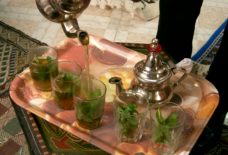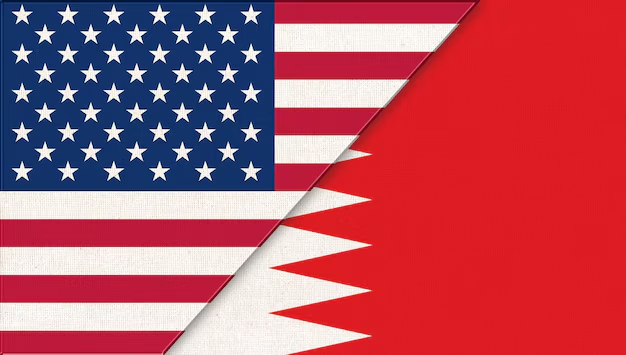8 Ancient sites you won't believe exist in Bahrain
By: Wael Sultan/Arab America Contributing Writer
Situated in the Arabian peninsula’s eastern portion, right off the Persian Gulf’s warm shores, is The Kingdom of Bahrain. A collection of islands comprises a small archipelago made up of 51 natural islands and an additional 33 artificial islands, centered around the main island (Bahrain), which makes up around 83% of the country’s landmass. At about 300 sq miles and a population of 1.2 million, it is the smallest country in the Arab World and 3rd smallest in the Asian continent. Bahrain is the site and hub of the ancient Dilmun civilization. It has been historically famed since antiquity for its pearl fisheries, which were considered the best in the world into the 19th century.
Bahrain is the dual-form of the Arabic word Bahr (“sea”), so al-Bahrain originally means “the two seas.” This analogy dates back to the belief that the Island’s historical trait consists of two types of water-Sweet and Saltwater.
There are multiple archaeological sites to check out the next time you visit the tiny island of Bahrain:
1. Dilmun Burial Mounds:
Dilmun civilization is regarded as one of the most prominent ancient civilizations in the region and a vital trading hub. At its peak, it controlled the Persian Gulf trading routes connecting Mesopotamia to the Indus Valley. The abundance of sweet water from springs and groundwater supplied the island with much of its drinking needs. It gave rise to civilization in a mainly desolate region. Bahrain has been known as an island with many burials and the largest cemeteries in the ancient world. These cemeteries are mostly concentrated in the north portion of the island, on the hard-stony terrain slightly above the arable farming soils – the island’s southern portion is mainly sand and desert-like. Recent studies have shown that the local population could have solely produced approximately 350,000 ancient grave mounds for thousands of years.
2. Qal’at al-Bahrain (Bahrain Fort):
Alternatively, known as the Bahrain Fort or Portuguese Fort, It was once the Dilmun civilization’s capital and officially a UNESCO World Heritage site since 2005. Archaeological excavations carried out since 1954 have excavated antiquities from an artificial mound of 12 m (39 ft) height containing seven layers, created by several occupants from 2300 BC up to the 18th century, including Kassites, Greeks, Portuguese, and Persians.
3. Barbar Temples:
The Barbar Temples is an archaeological site located in Barbar, Bahrain, considered to be part of the Dilmun culture. They are the most remarkable architectural survivals of the ancient world. The temples were built on top of one another, with the second built approximately 500 years later. The third was added between 2100 BC and 2000 BC. The two of the oldest temples are terraced with a central platform above an outer oval platform, an architectural feature comparable with many Sumerian temples.
4. Riffa Fort:
Located in Riffa, Bahrain, the fort was built in 1812 during Sheikh Salman bin Ahmed Al Fateh Al Khalifa’s reign. In the 19th century, the fort was home for Sheikh Salman bin Ahmed Al Fateh, and then it was inherited by his grandchildren. This fort carried historical significance when Riffa was the seat of government until 1869.
5. Tree of Life:
Tree of life is a 32 feet mystical tree that dates over 400 years old—nestled on a hill in a barren area of the Bahraini Desert. It’s a mystery how the tree of life is abundantly covered in green leaves and thriving in a desolated area with no water. The tree of life has become a local tourist attraction and is visited by approximately 65,000 people every year.
6. Khamis Mosque:
Built during the Umayyad caliph Umar II era, the Khamis Mosque is the first mosque in Bahrain. The foundation has been laid as early as 692 AD and is considered to be one of the oldest mosques in the Gulf region.
7. Ain Um Sujoor:
Located in Diraz, The water wells date back to the 3rd millennium BCE to the Dilmun period; rooms and ovens, located on the wells’ southern side, are believed to be later additions. The well on the north is called ‘holy well,’ named after discovering that a part of the structure was used to show peoples’ gratitude to their Gods for the water.
8. Bab Al-Bahrain (Bahrain’s Door):
Not officially considered an ancient site, but it is worth noting that Bab Al-Bahrain is a historical building located in the central business district of Manama. It marks the main entrance to the traditional Manama Souq.
Bahrain is a historical country that usually gets overshadowed by other big names in the region, like Mesopotamia, Egypt, and Indus Civilizations. It’s worth visiting and learning more about Bahrain’s fascinating history and seeing its glorious past with your own eyes.
Check out Arab America’s blog here!









